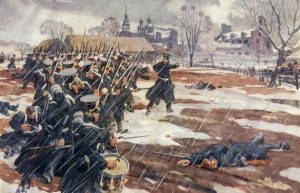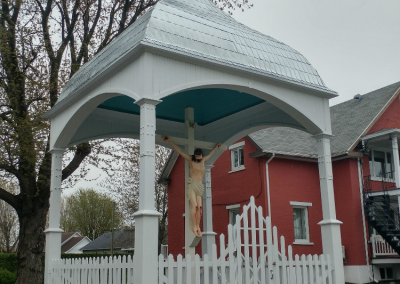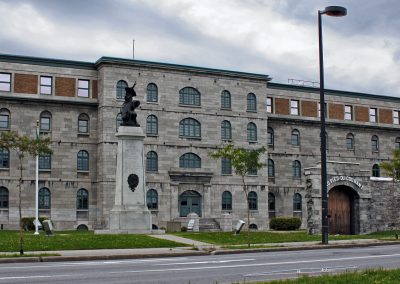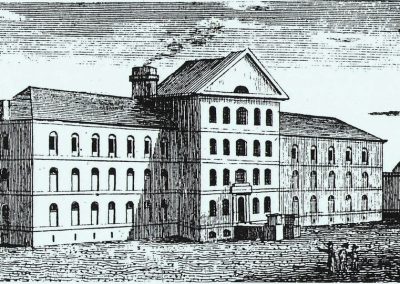The promise of a patriot
 The Patriot Rebellion:
The Patriot Rebellion:
During the years 1837 and 1838, there was a rebellion in Canada that essentially affected what was called Lower Canada at the time; what corresponds today to Quebec. The rebels identified themselves as the Patriotes. Some of them formed a group that called itself the Fils de la Liberté. Essentially made up of French Canadians, this movement aimed to free itself from the English influence which had a policy of assimilation. This rebellion was never supported by the Catholic Church because of its violence and secularism.
During the spring and summer of 1837, reformist leaders, chief among them Louis-Joseph Papineau, leader of the Parti patriote, took advantage of long-standing political tensions to build a large rebel force. The situation was so tense that in October 1837 all regular British troops were withdrawn from Upper Canada (now Ontario) and transferred to Lower Canada. The rebel troops were no match for the large British military force, under General John Colborne, supplemented by a large number of loyal Orangemen (Protestants) from Upper Canada. The rebel Patriotes faced Loyalist troops and militia on three occasions: at Saint-Denis, Saint-Charles and Saint-Eustache. Martial law was declared and many rebels, including Louis-Joseph Papineau, had to flee to the United States. Hundreds were arrested, many were deported to Australia, others were hanged in the Pied-du-Courant prison in Montreal.
The Calvary of Yamaska:
Among the prisoners was a man named Dominique Charland. Charland fought in the battle of Saint-Denis on November 23, 1837. After the battle, he was arrested and imprisoned in Trois-Rivières. Dominique repented of what he had done and while incarcerated in Trois-Rivières, he promised to build a monument in his native village if he avoided being hanged. When he was released in 1838, he kept his promise by erecting a calvary in the village of Yamaska.
The crucifix was made by Alexis Milette (1793-1869), one of the most active sculptors in the Trois-Rivières and Nicolet regions in the 19th century. Alfred Charland, son of Dominique, ensured its maintenance following his father. Arthur, son of Alfred, had it repaired in 1908. In 1922, the calvary was moved to its present location. Albert Moudou maintained it from 1942 to 2005. The corpus and the aedicule were restored in 2016.
Sources:
LEBLANC, Gilles. Pèlerinages et lieux de prière au Québec, Calvaire de Yamaska, page 85.
http://www.patrimoine-culturel.gouv.qc.ca/rpcq/detail.do?methode=consulter&id=120372&type=bien#.Xq9xydJYbIU






